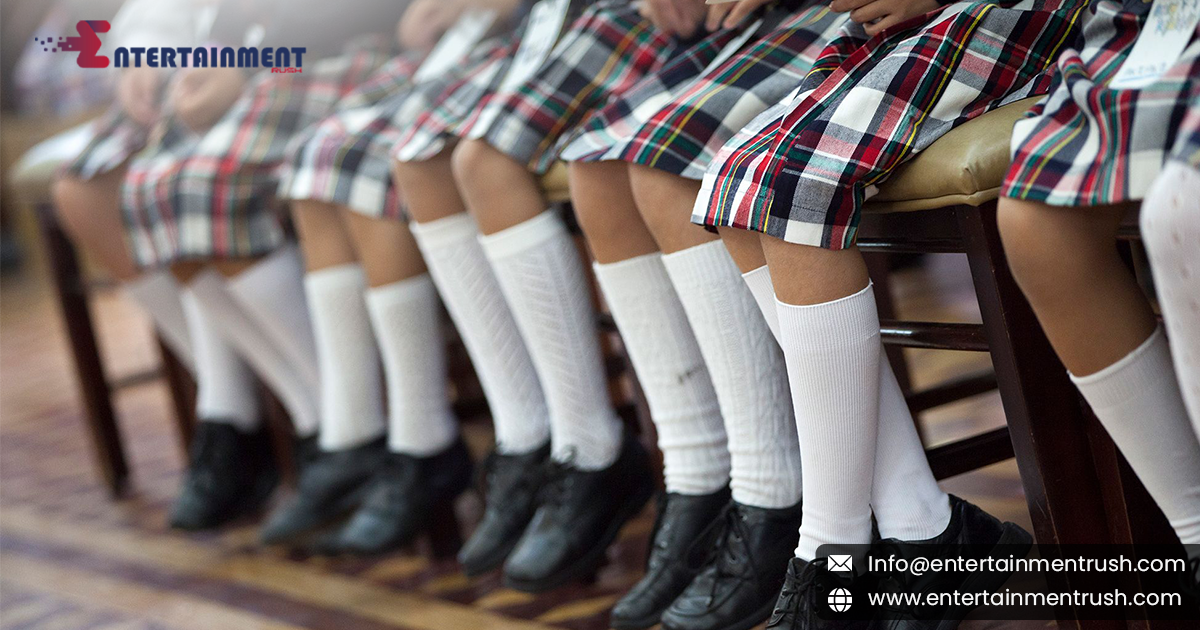Plaid in school uniforms has become a defining feature for students around the world, with the iconic pattern gracing uniforms in schools from the United States to Japan. But how did plaid, originally a fabric associated with Scottish heritage, rise to such prominence in educational institutions? The story of plaid’s journey from traditional Scottish tartans to school uniforms is one of cultural adoption, practicality, and lasting appeal.
The Origins of Plaid
Plaid, often confused with tartan, originated in Scotland, where it was historically used to distinguish different clans and families. Each pattern, or “sett,” represented a unique family line, and the colors were often derived from natural dyes available in specific regions. This use of plaid for identification created a cultural significance that extended beyond fashion, embedding itself into Scottish history.
Over time, the fabric crossed borders and gained popularity beyond Scotland, eventually becoming a symbol of tradition and authority. In the late 19th century, as school uniforms became more common, plaid began to be incorporated into institutional dress codes for its visual simplicity and cultural association with heritage and order.
Plaid’s Adoption in School Uniforms
The use of plaid in school uniforms can be traced back to the United Kingdom, particularly in private and religious schools. In the early 20th century, many schools with British roots began using plaid patterns, particularly in skirts and kilts for girls, as a nod to tradition and modesty. These uniforms not only represented the school’s identity but also carried with them a sense of discipline and structure.
As educational institutions sought to create a sense of unity and belonging among students, plaid patterns became an ideal choice. The recognizable fabric stood out and offered consistency, allowing schools to cultivate a shared identity. Furthermore, the patterns were durable and easy to produce, making them a practical choice for institutions that needed cost-effective uniform solutions.
Plaid in American Schools
Plaid’s popularity in school uniforms wasn’t limited to the UK. In the mid-20th century, the trend began to spread to the United States, where private and parochial schools adopted the plaid skirt for girls as a key element of their uniform policies. Catholic schools, in particular, embraced the use of plaid, making it a defining feature of their dress codes.
The influence of British fashion and traditional dress codes on American schools played a significant role in plaid’s rise to prominence. As more private schools sought to establish a formal and cohesive appearance, the use of plaid patterns became widespread. The tartan skirts became symbols of discipline, modesty, and academic excellence—values that aligned with the ethos of many educational institutions.
Plaid’s Modern Appeal
In today’s world, plaid remains a staple in school uniforms, but its appeal extends beyond just tradition. The fabric’s versatility and timeless design have kept it relevant in modern fashion, with designers reinterpreting plaid for contemporary styles. For schools, plaid continues to represent a balance of heritage and modernity, embodying a sense of order while allowing for creative expression through varying color schemes and patterns.
Furthermore, plaid’s association with academic excellence and its clean, structured appearance make it a popular choice among institutions seeking to convey tradition and unity. The uniformity that plaid brings to student attire helps foster a sense of belonging while maintaining the individuality of each school through unique patterns and colors.
Why Plaid Endures
The lasting popularity of plaid in school uniforms can be attributed to several factors. First, its historical association with authority and tradition gives the fabric a timeless appeal. Schools looking to establish a sense of discipline and academic excellence often gravitate towards plaid for its ability to convey structure and unity.
Second, the practicality of plaid cannot be overlooked. The patterns are durable, easy to maintain, and can withstand the wear and tear of everyday school life. This makes it a cost-effective option for institutions that want to ensure their uniforms are long-lasting and reliable.
Lastly, plaid’s versatility has allowed it to evolve with changing fashion trends. Schools can incorporate plaid in various ways, from skirts and ties to blazers and accessories, making it a flexible option that can adapt to different climates, cultures, and preferences.
Conclusion
Plaid in school uniforms has become more than just a fabric choice—it’s a symbol of tradition, unity, and academic excellence. From its origins in Scottish tartans to its widespread use in schools across the globe, plaid’s journey is one of cultural significance and practical utility. The enduring popularity of plaid in school uniforms reflects its timeless appeal and ability to represent both tradition and modernity in educational institutions.
The question of plaid in school uniforms: how did it become so popular? can be answered by looking at its historical roots, cultural adoption, and the practical benefits it offers. As long as schools continue to value tradition, discipline, and unity, it’s likely that plaid will remain a central feature in uniforms for generations to come.




Leave feedback about this